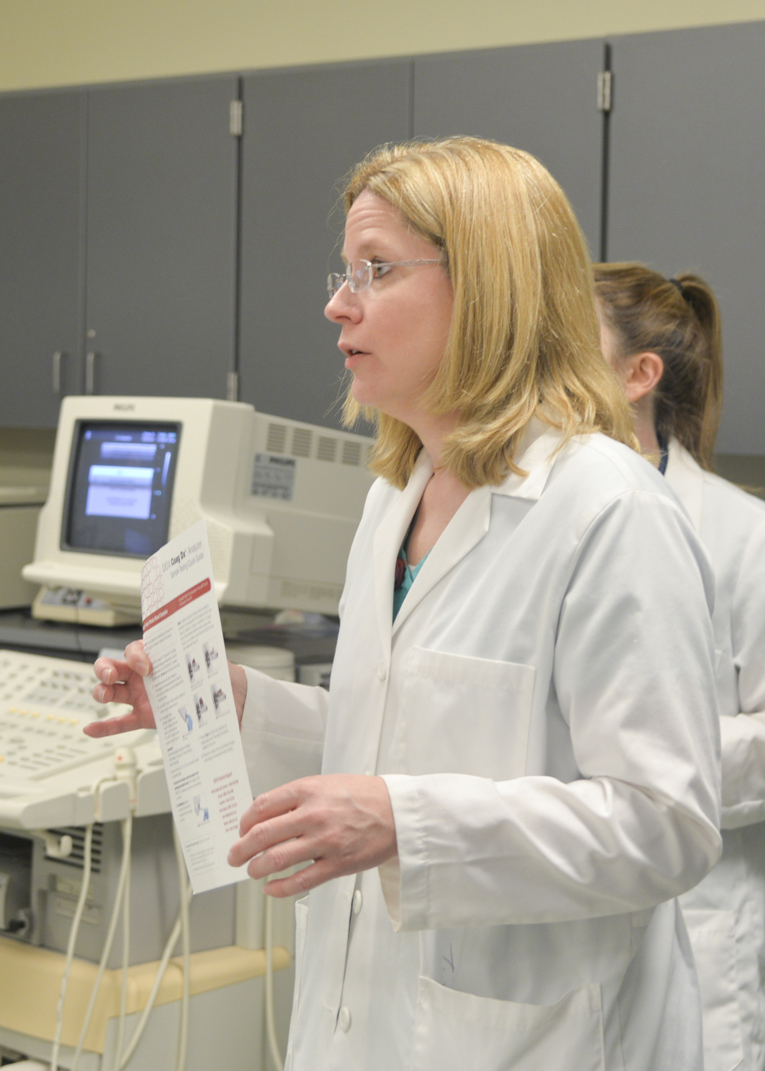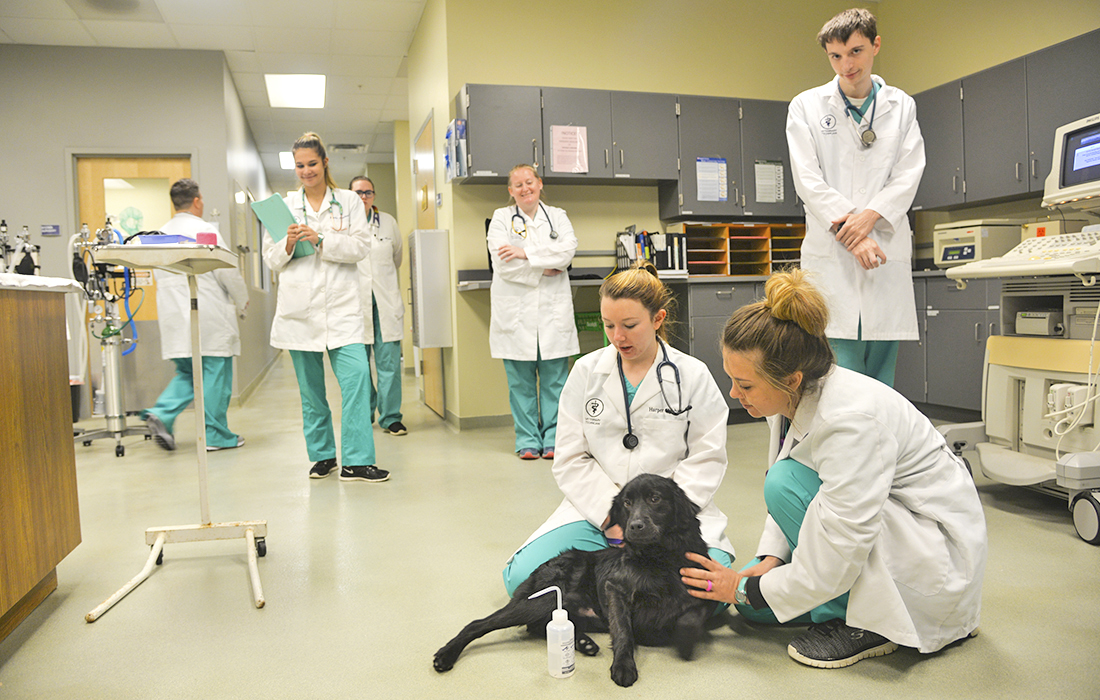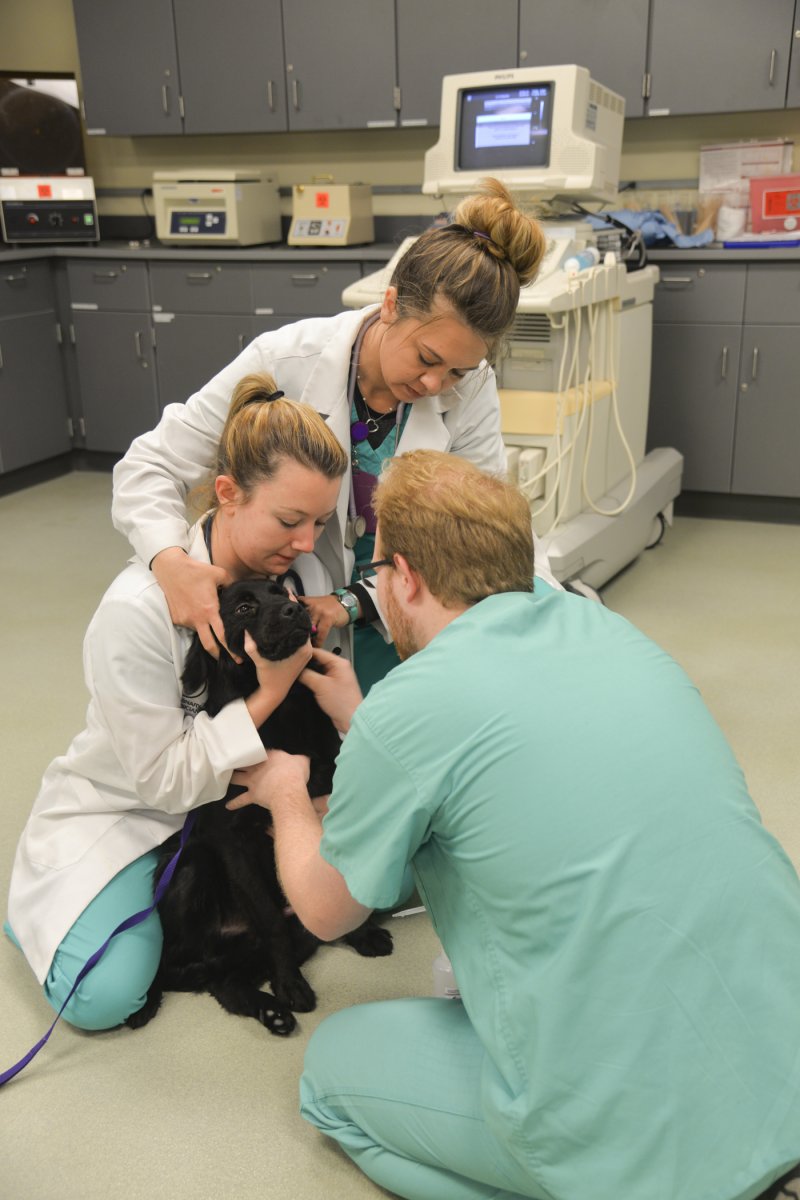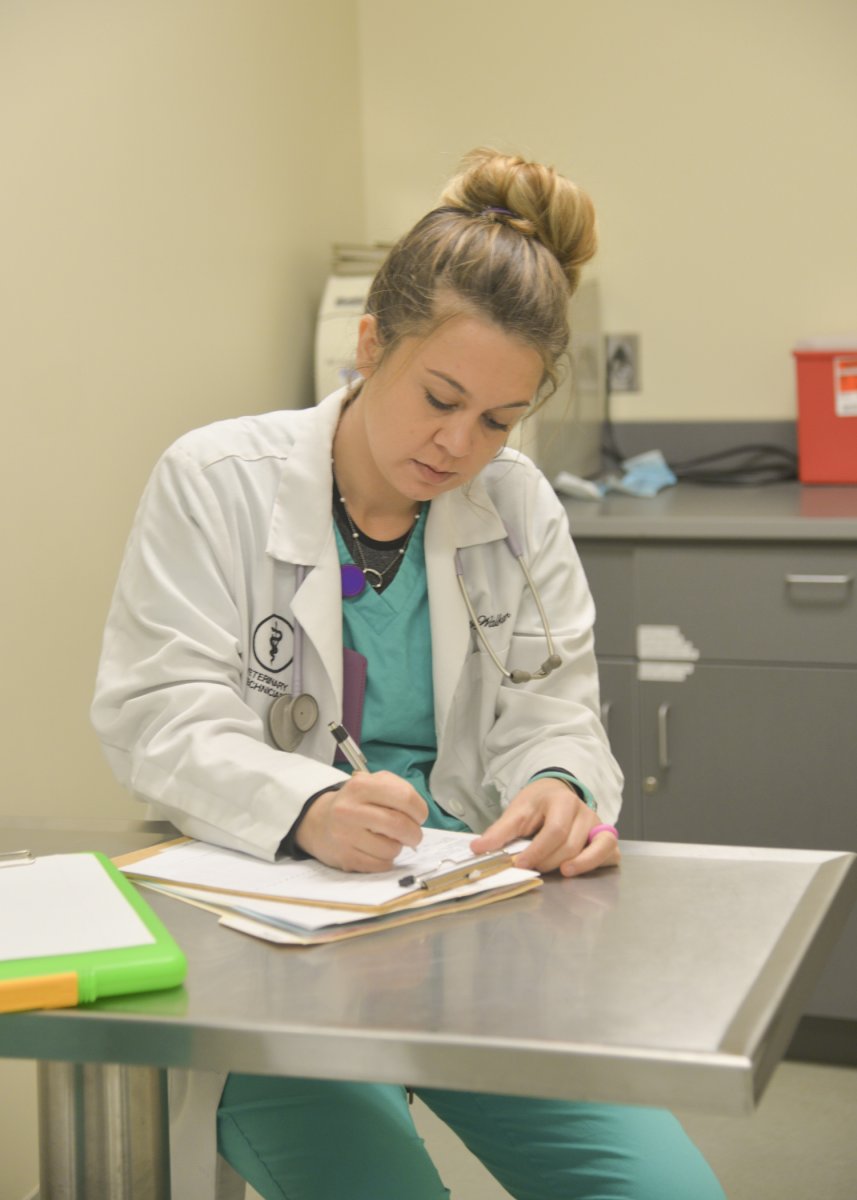Veterinary Technology About So Much More Than Cuddles
Working as a veterinary technician involves far more than the fun stuff like cuddling puppies and kittens. Most of Piedmont Technical College (PTC) Veterinary Technology Program Director Dr. Ruthie Buist’s students enter the program understanding this. Others, not so much.
“I actually had a student say to me once, ‘I didn’t know there would be so much science!’” Buist said. “The biggest thing is teaching students about the hard stuff. We don’t always get to play with the animals. That is a tough hurdle for a lot of people.”
Indeed. Veterinary technology students are going to face required courses such as basic microbiology, veterinary parasitology, clinical pathology, laboratory animal medicine and advanced medical care. Their role is comparable to that of a nurse in the medical field. They will need to know such things as how to draw blood from an anxious Labrador retriever’s jugular vein, monitor vital signs during a Yorkie’s delicate surgery, take x-rays of an injured Siamese cat, administer medication to a restless ferret, and much, much more.
Buist worked in private veterinary practice for about four years before joining the faculty at PTC in 2008. She has a degree in animal science from Clemson University and graduated from the University of Georgia Veterinary School. She has been around animals her entire life, having been raised on a Jersey dairy farm in Ninety Six, South Carolina.
“Of course, I loved animals from the time I was little,” Buist explained. “Our dairy vet early on would let me ask questions and mentor me. From the time I was old enough, I worked in a clinic.”
 The PTC Veterinary Technology program is housed in a special wing of the college’s Newberry County Campus that is fully equipped with classrooms, laboratory, surgery suite and kennel. Students treat mostly small, non-farm animals from the Newberry County Animal Shelter, a program partner.
The PTC Veterinary Technology program is housed in a special wing of the college’s Newberry County Campus that is fully equipped with classrooms, laboratory, surgery suite and kennel. Students treat mostly small, non-farm animals from the Newberry County Animal Shelter, a program partner.
“We have a contract with the shelter. They send us dogs and cats each week. We can ask for animals with specific health issues” that students are studying, Buist said.
To learn about caring for large animals such as cows and horses, she takes her students out to visit rural farms.
“Animals are funny. Horses especially know if you are there to do something that’s medical in nature. They can pick up clinical smells on your clothes. Anything like that, such as alcohol,” she explained. “It has a very strong odor.”
As the cost of veterinary care continues to rise, Buist believes access can be a problem, especially in rural America, which struggles to attract investment, create jobs and grow economically. Consequently, many people in rural communities have difficulty paying for basic necessities, let alone veterinary care.
“Cost is a hardship for many,” she said. “Veterinary insurance is becoming more and more common. We have empathy for every animal, but we are still in a business.” Accordingly, the associate degree in veterinary technology program requires a course on office management to introduce skills such as rudimentary bookkeeping and using computers.
Even veterinary practices in rural areas can find it challenging to attract qualified technicians.
“Most of our graduates are in small animal-exclusive practices, especially in the Columbia area,” Buist said. “That is where some of the better-paying jobs are.”
Veterinary technology students also are encouraged to include education of clients as part of the job, particularly when it comes to such topics as vaccinations, nutrition and sterilization.
 “Every animal that you neuter or spay, it helps a lot,” Buist said. “Client education is part of our role.”
“Every animal that you neuter or spay, it helps a lot,” Buist said. “Client education is part of our role.”
Buist said one of the most difficult subjects for students to learn about is euthanasia. Most choose veterinary technology as a profession because they harbor great compassion for animals, which is a good thing. But putting an animal to sleep can be alternately the kindest and most painful choice a pet owner makes. The veterinary technician is taught that clients will ask what they would do if it was their own pet, but the owner should make the decision. The technician should not sway the client.”
“From the first semester orientation, we talk about euthanasia and stages of grief, she said. “At least by the third semester, they have observed it though that is optional.”
When students begin their time observing and assisting in actual veterinary clinics, their soft skills become very important. In fact, soft skills ― proper workplace habits and behavior ― are among the hardest to teach, according to Buist.
Prompt attendance and effective communication can be hard to instill. Once in the clinical setting, however, most step up.
“We are so hard on them,” she said. “They do so much more when they go into the clinics. I think they put their best foot forward when they go into the clinics.”
For more information about PTC’s Veterinary Technology program, visit www.ptc.edu/vet. View related story of a Vet Tech alum, click here.
PHOTO CUTLINES
- Dr. Ruthie Buist
- Students work together to draw a blood sample from a black lab mix.
- And some days, you really do get to cuddle a puppy.
- A PTC student documents a patient’s care.